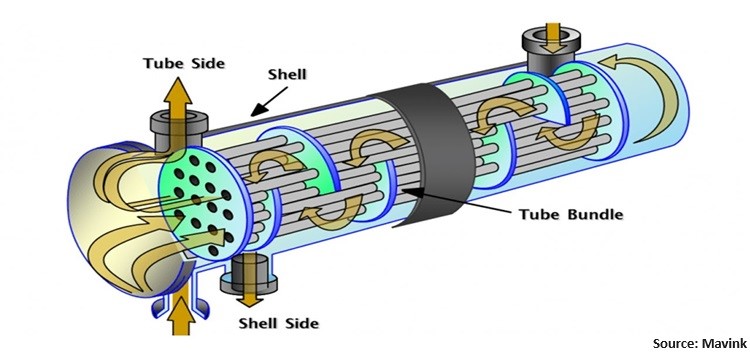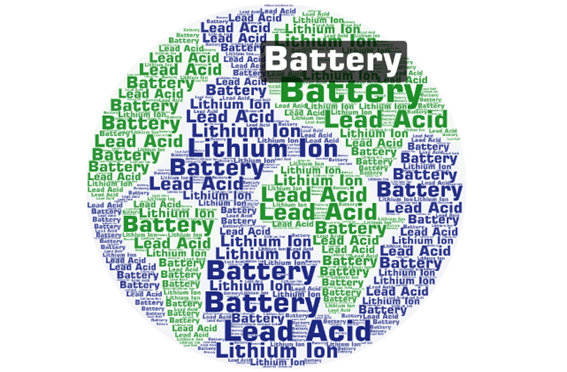
Carbon Capture, Utilization and Storage (CCUS) Market by Service (Capture, Transportation, Utilization, and Storage), by Technology (Pre-Combustion Capture, Industrial Process, Oxy-Fuel Combustion Capture and Post-Combustion Capture), and by End-User (Oil & Gas, Power Generation, Iron & Steel, Chemical & Petrochemical, Cement, and Others)- Global Opportunity Analysis and Industry Forecast 2024-2030
Carbon Capture, Utilization and Storage Market Overview
The global Carbon Capture, Utilization and Storage Market size was valued at USD 2.85 billion in 2023 and is predicted to reach USD 7.74 billion by 2030 with a CAGR of 13.3% from 2024-2030. Carbon Capture, Utilization, and Storage (CCUS) market encompasses a range of technologies and strategies aimed at mitigating carbon dioxide (CO2) emissions from industrial processes and power generation.
It involves capturing CO2 at the source, generally from large point sources including power plants and industrial facilities. They offer industries a pathway to achieve sustainability goals while supporting economic growth through innovation in carbon management technologies and infrastructure. CCUS also plays a pivotal role in enabling industries to comply with regulatory frameworks and international agreements aimed at limiting global warming and promoting environmental stewardship.
Market Dynamics and Trends
The demand for market is significantly driven due to the growing awareness of the impacts of climate change and the need to focus on reducing greenhouse gas emissions. CCUS technology allow to capture and store CO2, thereby reducing emissions and carbon footprints across the globe.
For instance, Schlumberger NV partnered with Aker Carbon Capture to launch Aker Carbon Capture AS, a joint venture focused on advancing carbon capture technologies for industrial decarbonization. This partnership leverages Schlumberger's extensive energy sector experience alongside Aker's leadership in carbon capture technology to promote sustainable industrial practices, contributing significantly to global climate change mitigation efforts.
Moreover, rising government policies and plans such as subsidies and tax exemption to encourage investment in CCUS technology is further driving the growth of the market. As stated by the International Monetary Fund, the government of numerous countries across the globe are investing heavily in the reduction of carbon emission, with investment expected to reach 5 trillion by 2050.
However, high investment for CCUS project along with safety concerns over storage techniques are the major factors restraining the growth of the industry. On the contrary, the introduction of carbon8 and Oxyfuel combustion to capture 100% CO2 is expected to create ample opportunities for the growth of the market in the coming years.
These technologies provide significant advancements in capturing CO2 emissions from industrial processes and power generation with high efficiency and effectiveness, driving innovation, and fostering a more sustainable industrial landscape worldwide.
Market Segmentations and Scope of the Study
The carbon capture, utilization and storage market report has been segmented on the basis of service, technology, end-user, region. On the basis of service, the market is divided into capture, transportation, utilization, and storage. On the basis of technology, the market is classified into pre-combustion capture, industrial process, and oxy-fuel combustion capture, and post-combustion capture. On the basis of end-user, the market is segmented into oil & gas, power generation, iron & steel, chemical & petrochemical, cement, and others. Regional breakdown and analysis of each of the aforesaid segments include regions comprising of North America, Europe, Asia-Pacific, and Rest of the World (RoW).
Geographical Analysis
North America dominates the carbon capture, utilization and storage market share and is expected to continue its dominance during the forecast period. This is due to the rising government initiatives to reduce greenhouse gas emission and attain carbon neutrality.
For instance, the government of U.S. announced a new target for U.S. to achieve 50-52 % reduction in greenhouse gas emission and a goal to reach 100% pollution-free electricity by 2035. Such rise in the government policies for carbon mitigation drives the growth of the industry in this region.
Moreover, the growing development in oil & gas industries in countries such as the US and Canada along with rising awareness to lower carbon emission is further driving the growth of the carbon capture, utilization and storage market demand in this region.
According to the Council on Foreign Relations, the United States is the world’s top producer of oil and natural gas in 2021. As one of the largest producers of natural resources, the need for reducing carbon emission generated by these industries is on the rise. On the other hand, Asia Pacific is expected to show a steady rise in the carbon capture, utilization and storage market growth. This is due to the growing steel production in countries such as China and India.
According to the World Steel Association, China produced 86.95 Metric tons of crude steel in September 2022, that is an increase of 17.6% as compared to September 2021. Such growth in these industries contributes to the rising greenhouse gas emissions, as steelmaking process relies on burning fossil fuels such as coal and natural gas, which drives the growth of the carbon capture industry.
Moreover, the presence of key companies such as Mitsubishi Heavy Industries, Ltd. and JGC Holdings plays a major role in the growth of the CCUS market trends. These market leaders continually innovate and collaborate to advance carbon capture technologies, shaping the future of sustainable industrial practices.
For instance, in May 2024, Mitsubishi Heavy Industries, Ltd. partnered with ArcelorMittal, BHP, and Mitsubishi Development Pty Ltd (Mitsubishi Development) for the construction of a large-scale carbon capture unit, starting from 2024. This initiative aims to capture and store CO2 emissions from steelmaking processes, enhancing sustainability efforts and promoting cleaner industrial practices to reduce carbon emissions.
Competitive Landscape
Various key players operating in the carbon capture, utilization and storage industry include Shell plc, Fluor Corporation, Mitsubishi Heavy Industries, Ltd., Exxon Mobil Corporation, JGC Holdings Corporation, Schlumberger Limited, Aker Solutions ASA, Honeywell International Inc., Halliburton Company, and Carbon Engineering Ltd. and others. These market players are adopting various strategies such as acquisition and collaboration to remain dominant in the industry.
For instance, in June 2024, Shell Canada Products, a subsidiary of Shell plc, invested in the Polaris carbon capture project at the Shell Energy and Chemicals Park in Canada. This project aims to capture approximately 650,000 tonnes of CO2 annually from Shell’s Scotford refinery and chemicals complex, aiming to reduce its carbon emission and meet climate goals.
Also, in May 2024, Mitsubishi Heavy Industries Ltd collaborated with ArcelorMittal, MHI, and BHP to launch its pilot carbon capture unit at Gent Steelmaking plant. The project was aimed towards capturing reducing CO2 emissions and complying with the EU's objectives to achieve carbon neutrality by 2030 by decarbonizing steel production.
Moreover, in August 2022, Shell PLC acquired Sprng Energy Group of Companies. Through this acquisition, the company aims to expand the capacity of carbon capture and storage potential in its numerous refineries and factories.
Moreover, in June 2022, ExxonMobil Corporation collaborated with CNOOC and Shell Plc to evaluate the potential for a world-scale carbon capture and storage project to reduce greenhouse gas emissions. This collaboration was aimed to capture 10 million metric tons of CO2 per year to support China’s 2060 carbon neutrality ambition.
Key Benefits
-
The report provides quantitative analysis and estimations of the market from 2024 to 2030, which assists in identifying the prevailing market opportunities.
-
The study comprises a deep-dive analysis of the current and future carbon capture, utilization and storage market trends to depict prevalent investment pockets in the market.
-
Information related to key drivers, restraints, and opportunities and their impact on the market is provided in the report.
-
Competitive analysis of the players, along with their market share is provided in the report.
-
SWOT analysis and Porters Five Forces model is elaborated in the study.
-
Value chain analysis in the market study provides a clear picture of roles of stakeholders.
Carbon Capture, Utilization and Storage (CCUS) Market Key Segments
By Service
-
Capture
-
Transportation
-
Utilization
-
Storage
By Technology
-
Pre-Combustion Capture
-
Industrial Process
-
Oxy-Fuel Combustion Capture
-
Post-Combustion Capture
By Industry Vertical
-
Oil & Gas
-
Power Generation
-
Iron & Steel
-
Chemical & Petrochemical
-
Cement
-
Others
By Region
-
North America
-
The U.S.
-
Canada
-
Mexico
-
-
Europe
-
The U.K.
-
Germany
-
France
-
Italy
-
Spain
-
Denmark
-
Netherlands
-
Finland
-
Sweden
-
Norway
-
Russia
-
Rest of Europe
-
-
Asia-Pacific
-
China
-
Japan
-
India
-
South Korea
-
Australia
-
Indonesia
-
Singapore
-
Taiwan
-
Thailand
-
Rest of Asia-Pacific
-
-
Rest of the World (RoW)
-
Latin America
-
Middle East
-
Africa
-
Key Players
-
Shell PLC
-
Fluor Corporation
-
Mitsubishi Heavy Industries, Ltd.
-
Exxon Mobil Corporation
-
JGC Holdings Corporation
-
Schlumberger Limited
-
Aker Solutions ASA
-
Honeywell International Inc.
-
Halliburton Company
-
Carbon Engineering Ltd.
REPORT SCOPE AND SEGMENTATION:
|
Parameters |
Details |
|
Market Size in 2023 |
USD 2.85 billion |
|
Revenue Forecast in 2030 |
USD 7.74 billion |
|
Growth Rate |
CAGR of 13.3% from 2024 to 2030 |
|
Analysis Period |
2023–2030 |
|
Base Year Considered |
2023 |
|
Forecast Period |
2024–2030 |
|
Market Size Estimation |
Billion (USD) |
|
Growth Factors |
|
|
Countries Covered |
28 |
|
Companies Profiled |
10 |
|
Market Share |
Available for 10 companies |
|
Customization Scope |
Free customization (equivalent to up to 80 working hours of analysts) after purchase. Addition or alteration to country, regional, and segment scope. |
|
Pricing and Purchase Options |
Avail customized purchase options to meet your exact research needs. |




 Speak to Our Analyst
Speak to Our Analyst

































